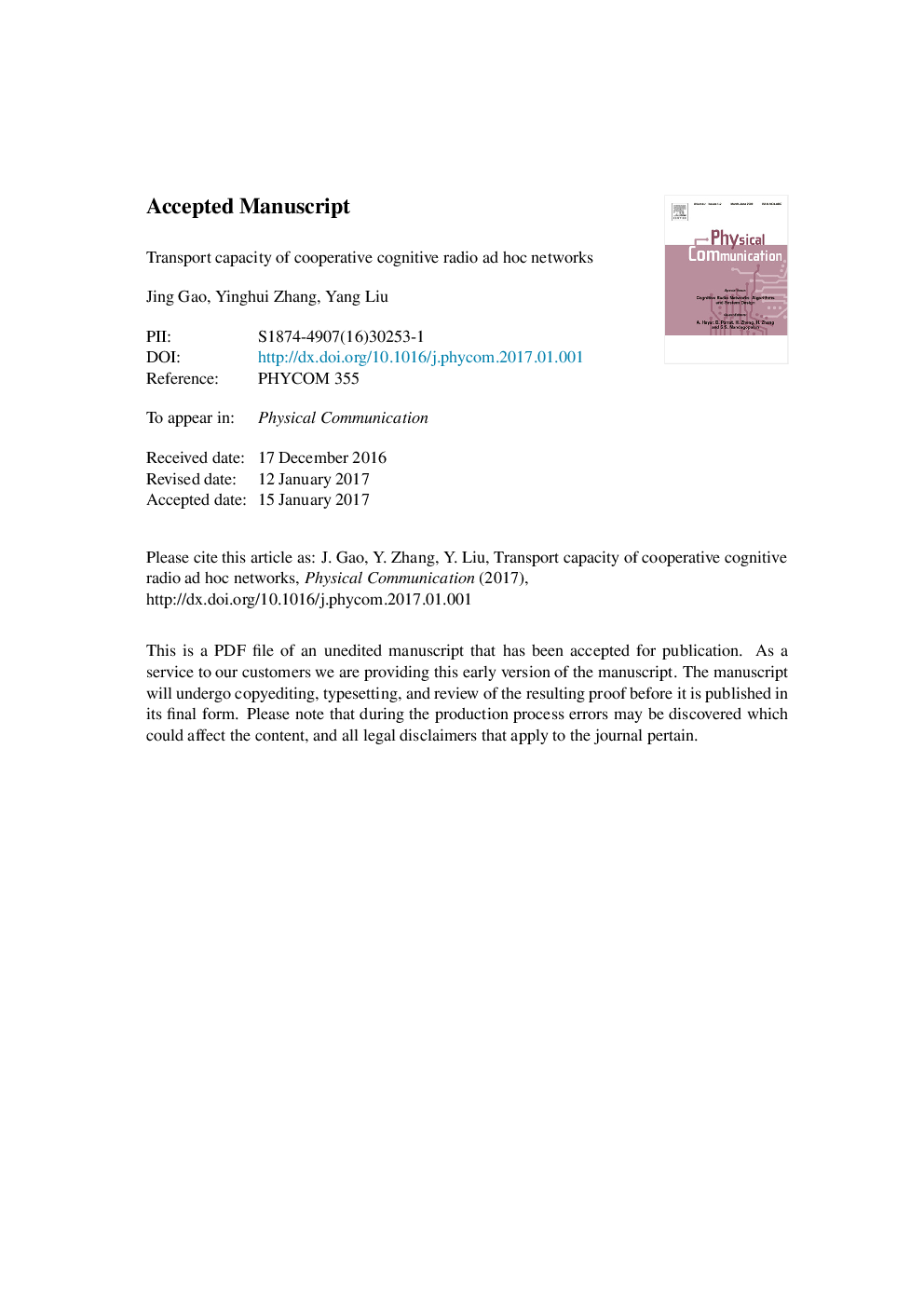| Article ID | Journal | Published Year | Pages | File Type |
|---|---|---|---|---|
| 6889226 | Physical Communication | 2017 | 9 Pages |
Abstract
It is more challenging for improving the traditional performance metrics for the 5-th generation network (5G) because of more congestible frequency spectrum. How to improve the network capacity without using more spectrum has become one of important studies in 5G. In this paper, the transport capacity of cooperative cognitive radio ad hoc networks is studied. In order to characterize the transport capacity, a half-slotted ALOHA multiple access protocol is introduced. In each slot, secondary users are divided into cooperative secondary users and ordinary users dependent on the positional relationship between them and primary transmitters. Primary transmitters send their packets in the first half slot while keep silence in the second half slot. Ordinary secondary users send their packets at a probability p in the whole slot. Cooperative secondary users receive the packets from their corresponding primary transmitters in the first half slot and forward them to the primary receivers in the second half slot. The closed-form expressions of the bounds of primary transport capacity and mean secondary transport capacity are derived based on the protocol. Furtherly, the optimal problem of the performance is analyzed about two important parameters: primary and secondary coverage radius. Theoretical results show that an optimal primary coverage radius could be found to maximize the transport capacity of primary network. While the transport capacity of secondary network increases with the increasing secondary coverage radius. The analysis reveals that the transport capacity could be improved by secondary cooperation because of higher successful transmission probability.
Related Topics
Physical Sciences and Engineering
Computer Science
Computer Networks and Communications
Authors
Jing Gao, Yinghui Zhang, Yang Liu,
